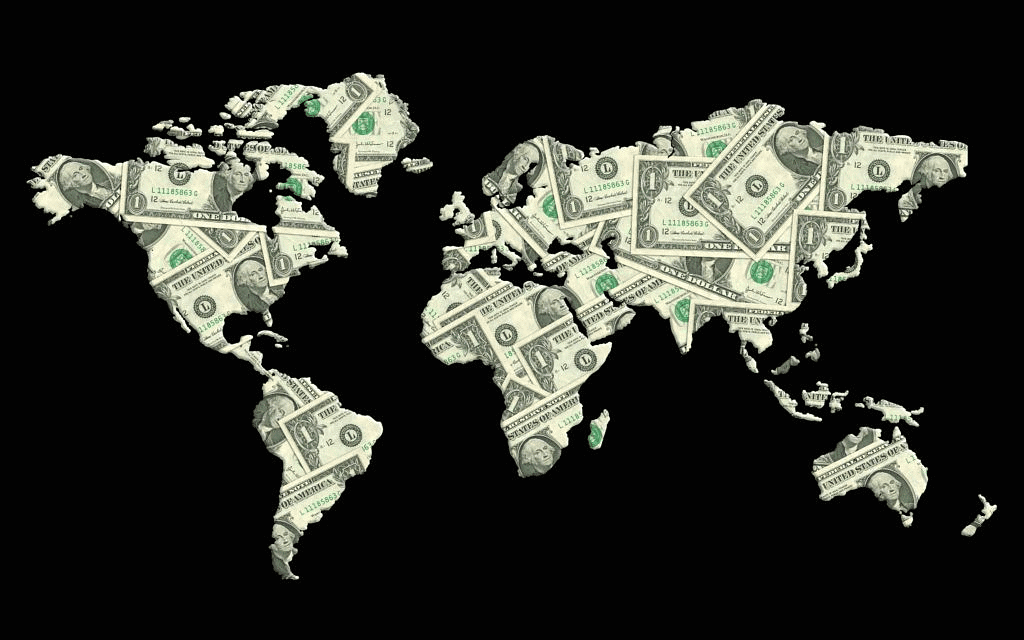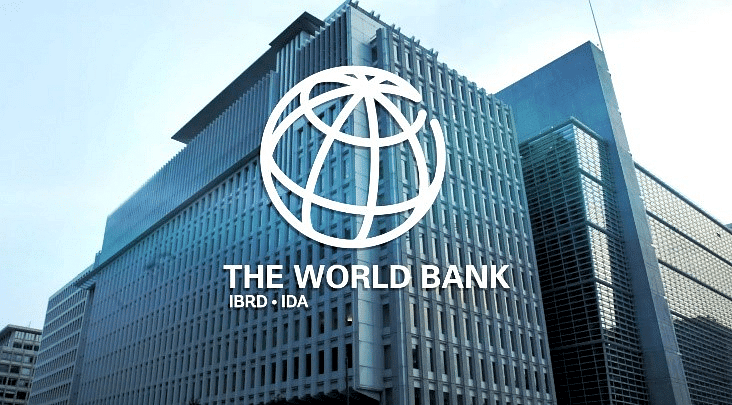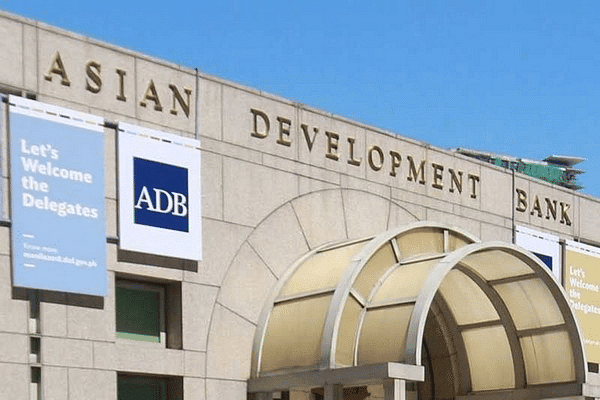UPSC Exam > UPSC Notes > Indian Economy for UPSC CSE > Ramesh Singh Summary: International Economic Organisations & India- 1
Ramesh Singh Summary: International Economic Organisations & India- 1 | Indian Economy for UPSC CSE PDF Download
| Table of contents |

|
| International Monetary System |

|
| Bretton Woods Development |

|
| World Bank |

|
| Asian Development Bank |

|
| OECD |

|
International Monetary System
The international monetary system (IMS) refers to the customs, rules, instruments, facilities, and organisations facilitating international (external) payments. Sometimes the IMS is also referred to as an international monetary order or regime.
- Adjustment : It refers to the process by which the balance-of-payment (BoP) crises of the nations of the world (or the member nations) are corrected. A good IMS tries to minimise the cost of BoP and time for adjustment for the nations.
- Liquidity : It refers to the amount of foreign currency reserves available to settle the BoP crises of the nations. A good IMS maintains as much foreign reserves to mitigate such crises of the nations without any inflationary pressures on the nations.
- Confidence : It refers to the faith the nations of the world should show that the adjustment mechanism of the IMS is working adequately and that foreign reserves will retain their absolute and relative values. This confidence is based on the transparent knowledge information about the IMS.
Bretton Woods Development
- As the powerful nations of the world were hopeful of a new and more stable world order with the emergence of the UNO, on the contrary, they were also anxious for a more homogenous world financial order, after the Second World War.
- The representatives of the USA, the UK and 42 other (total 44 countries) nations met at Bretton Woods, New Hampshire, USA in July 1944 to decide a new international monetary system.
- The International Monetary Fund (IMF) and the World Bank (with its first group-institution IBRD) were set up together—popularly called as the Bretton Woods' twins —both having their headquarters in Washington DC, USA.
World Bank
- The World Bank is an international financial institution that provides loans and grants to the governments of poorer countries for the purpose of pursuing capital projects.
- It consists of two main institutions: the International Bank for Reconstruction and Development (IBRD) and the International Development Association (IDA).
- The World Bank aims to reduce poverty and support development by providing financial and technical assistance for a wide array of projects in areas such as infrastructure, education, healthcare, and agriculture.
- It also conducts research and analysis on global economic issues and provides policy advice to its member countries.
 IBRD
IBRD
- The International Bank for Reconstruction and Development is the oldest of the WB institutions which started functioning (1945) in the area of reconstruction of the war-ravaged regions (World War II) and later for the development of the middle-income and credit-worthy poorer economies of the world.
- Human development was the main focus of the developmental lending with a very low interest rate (1.55 per cent per annum)—the areas of focus being agriculture, irrigation, urban development, healthcare, family welfare, dairy development, etc. It commenced lending for India in 1949.
IDA
- The International Development Agency (IDA) which is also known as the soft window of the WB was set up in 1960 with the basic aim of developing infrastructural support among the member nations, long-term lending for the development of economic services.
- Its loans, known as credits are extended mainly to economies with less than $895 per capita income. The credits are for a period of 35-40 years, interest-free, except for a small charge to cover administrative costs.
IFC
- The International Finance Corporation (IFC) was set up in 1956 which is also known as the private arm of the WB. It lends money to private sector companies of its member nations.
- The interest rate charged is commercial but comparatively low. There are many attractive features of IFC's lending.
- It finances and provides advice for private-public ventures and projects in partnership with private investors and, through its advisory work, helps governments of the member nations to create conditions that stimulate the flow of both domestic and foreign private savings and investment.
MIGA
The Multilateral Investment Guarantee Agency (MIGA), set up in 1988 encourages foreign investment in developing economies by offering insurance (guarantees) to foreign private investors against loss caused by non-commercial (i.e., political) risks, such as currency transfer, expropriation, war and civil disturbance. It also provides technical assistance to help countries disseminate information on investment opportunities.
ICSID
- The International Centre for Settlement of Investment Disputes (ICSID), set up in 1966 is an investment dispute settlement body whose decisions are binding on the parties.
- It was established under the 1966 Convention on the Settlement of Investment Disputes between States and Nationals of Other States.
- Though recourse to the centre is voluntary, but once the parties have agreed to arbitration, they cannot withdraw their consent unilaterally.
- It settles the investment disputes arising between the investing foreign companies and the host countries where the investments have been done.
Asian Development Bank
- Set up in 1966 with 31 founding members (India being one of them), today (by March 2017) it has grown to encompass 67 members—of which 48 are from Asia and Pacific and 19 from outside. It has its headquarters situated at Manila, Philippines.

- The purpose of the Bank is to foster economic growth and co-operation in the region of Asia and the Far East and to contribute to economic development of the developing member countries, collectively and individually
- The Bank has extended technical assistance to India in addition to loans from its OCR window. The technical assistance provided include support for institutional strengthening, effective project implementation and policy reforms as well as for project preparation.
- India holds the position of Executive Director on the Board of Directors of the Bank—its constituency comprises India, Bangladesh, Bhutan, Lao PDR and Tajikistan. The Finance Minister is India's Governor on the Board of Governors of the Asian Development Bank and Secretary (EA) is the Alternate Governor.
OECD
- The roots of the Organisation for Economic Co-operation and Development (OECD), Paris, go back to the rubble of Europe after World War II.
- The Organisation for European Economic Cooperation (OEEC) was established in 1947 to run the US-financed Marshall Plan for reconstruction of a continent ravaged by war. By making individual governments recognise the interdependence of their economies, it paved the way for a new era of cooperation that was to change the face of Europe.
- OECD member countries worldwide regularly turn to one another to identify problems, discuss and analyse them, and promote policies to solve them.
- There are many countries that a few decades ago were still only minor players on the world stage—China, India and Brazil have emerged as new economic giants. Most of the countries that formed part of the former Soviet bloc have either joined the OECD or adopted its standards and principles to achieve the common goals.
The document Ramesh Singh Summary: International Economic Organisations & India- 1 | Indian Economy for UPSC CSE is a part of the UPSC Course Indian Economy for UPSC CSE.
All you need of UPSC at this link: UPSC
|
108 videos|431 docs|128 tests
|
FAQs on Ramesh Singh Summary: International Economic Organisations & India- 1 - Indian Economy for UPSC CSE
| 1. What is the Bretton Woods Development and its significance? |  |
Ans. The Bretton Woods Development refers to the conference held in 1944 in Bretton Woods, New Hampshire, where the World Bank and the International Monetary Fund (IMF) were established. It laid the foundation for the international monetary system that existed until the early 1970s.
| 2. What is the role of the World Bank in the international economic system? |  |
Ans. The World Bank provides financial and technical assistance to developing countries for development projects that aim to reduce poverty and promote sustainable economic growth. It focuses on areas such as infrastructure, education, healthcare, and agriculture.
| 3. How does the Asian Development Bank support economic development in Asia? |  |
Ans. The Asian Development Bank provides loans, grants, and technical assistance to its member countries in Asia and the Pacific to support projects that promote economic growth, reduce poverty, and improve the quality of life for people in the region.
| 4. What is the significance of India's involvement with the World Trade Organisation (WTO)? |  |
Ans. India is a member of the WTO, which helps facilitate international trade by setting rules and resolving disputes between member countries. India's involvement in the WTO allows it to participate in global trade negotiations and benefit from a rules-based trading system.
| 5. How are the BRICS Bank and the Asian Infrastructure Investment Bank different from traditional international financial institutions? |  |
Ans. The BRICS Bank and the Asian Infrastructure Investment Bank were established by emerging economies to provide financing for infrastructure projects in developing countries. They aim to complement the efforts of traditional international financial institutions like the World Bank and the IMF.
Related Searches
















